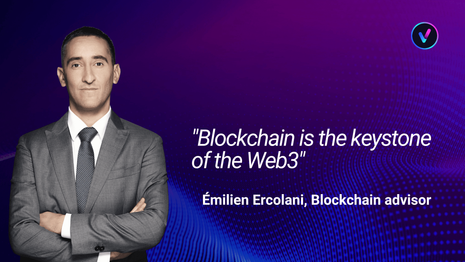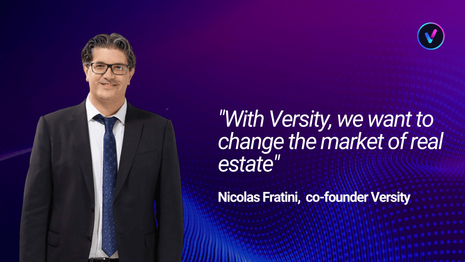
Versity: 5 questions to Léo Delion, tokenomics advisor

Analyst at Nomiks, Europe's leading Tokenomics design and auditing firm, Leo Delion has trained thousands of people in Web3. His mantra? "Blockchain is to transactions what the internet was to information". Leo accompanies the Versity team in its deployment as a tokenomics advisor. Meeting.
Your definition of an NFT?
Here we can make the connection with a title deed in the "traditional" world. However, the latter is in our case independent of any traditional administrative process. That is, the strict protocol of a Blockchain allows us to recreate a legal framework proper to the issuance, transmission, royalty or even sale of a property title, but without the presence of any traditional actor all along.
By "property" we mean here a broader notion than the physical possession of something.
For example, in an NFT could be included a percentage of lifetime royalties on the career of an artist, because by creating the said NFT (the "mint") its owner has participated in the initial financing of the artist, thus materializing a royalty in the metadata of the Token (the NFT).
What are the rules when distributing a total supply?
There are a good number of internal and external constraints to take into account in a supply, with often very technical notions. In this case, we will try a comparison to explain some of them: let's see the supply as a tailored garment. If the result is different from what was planned, there may be several possibilities that are not in line with expectations:
- A tight garment (scarcity : liquidity crisis);
- A garment that is too big (over inflationary: an excess of supply compared to demand at the current price);
- A fragile garment (pulling on any part of the garment distorts it or worse, tears it).
To give more context, the first problem prevents real users from accessing the service articulated around the Token (slowing down the economy).
The second one will create an overflow of supply compared to the real usefulness at time T, which pushes the user to automatically resell his Tokens to a third party rather than keeping them in the circularity of the economy (selling pressure).
Finally, the third problem reflects a concern for balancing: the economy is subdivided into different areas, each of which has different actors articulated around central components. When the economy is launched, the Token's objective is to create inertia by encouraging each of the actors to play its role on its key component. But if actors exert too much influence on their component they will trigger internal influence on other actors and single-handedly unbalance several other components.
As you will have understood, in the initial supply this distribution between the first actors must be already calculated by giving a limited power to each, and this "calculated power" must be dynamic according to where the adoption will be located.
What is a vesting and lockup? And why is it used?
It is important to know that crypto-currency, more specifically, fundraising (ICO) is a form of P2P (pair to pair) funding. In other words, the investor is directly connected to the project without the need to contract anything from anyone. The project thus raises funds without heavy administrative supervision and by minimizing the third parties involved.
So, to seal the investor's trust in the project but also the project's trust in its investors or actors, vesting and lock-up are the key.
They will allow to allocate from the launch of the Token SITY an amount of the latter to certain actors/investors who will receive it only after a certain period (lock-up). But not only.
To further support the long term commitment, we apply a Vesting that will divide the distribution in SITY of our interested party to for example 10 months after the lock-up. This means that if he was supposed to receive 1,000 SITY at his lock-up, he will only receive 100. Ditto the month after and this for 9 months until he reaches the expected 1,000 SITY.
What is a burn?
The burn is globally a balancing mechanism and induces a notion of "compensation". If we take again the example of the tailor-made clothing with the problem of the size too large, this one will come to destroy a part of the surplus in order to make it closer to the real need at the moment T and to avoid any overflow.
Why did you join the Versity adventure?
Blockchain rhymes with dematerialization, a concept that has been widely proven by players already sporting this market (we see this with decentralized autonomous organizations, digital artworks or even decentralized finance projects). Where Versity pulls its weight is by bringing a physical part with the sale of real estate, while blending perfectly with the dematerialization concept with its metaverse and the SITY Token.
Would you like to discover more about Versity? Find out the interview with Emilien Ercolani, our blockchain advisor.

